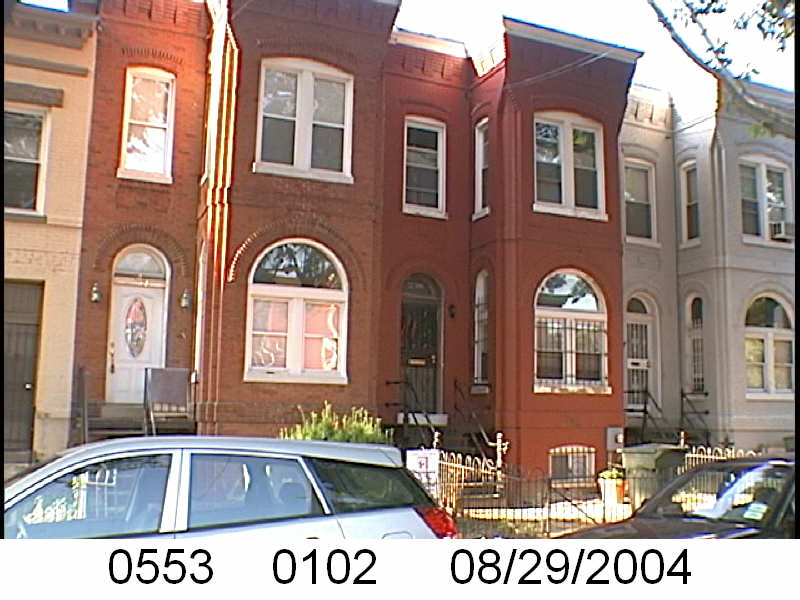In the 1920 census George W. Timus at 221 O St NW was listed as the home owner. He lived there with his wife Bessie (nee Bessie F. Fraley) and their two daughters Josephine and Ethel. He was a messenger and his wife was a dressmaker.
In the 1910 census George Timus rented 221 O St NW. He lived in the house with Bessie and their daughters, along with his widowed mother Amanda and his sister Lola. He was an express man for his own business. The only other person with an occupation was the 28 year old Lola who was a laundress.
The earliest record of George Timus at 221 O Street NW comes from the 1906 city directory. It showed him as an express man. Because it was the name index it also showed other Timus family members at 221 O St NW. Robert J. Timus lived there, but no occupation was recorded. William H. Timus was a porter. An earlier city directory has the Timus family at 217 O St NW in 1900. Amanda was a washer woman, George a driver, and Robert a coachman. William H. Timus was living in another neighborhood entirely, as a clerk.
The first record in the land records for George Timus was a 1924 chattel mortgage, for a truck, a second hand GMC truck model 31-B lease. There are two deeds from March 1928. One was transferring Sq 553 lot 9 from the American Security and Trust Company. The second, also for lot 9, from George and Bessie Timus transferred it to Margaret G. Cahill.
When the 1930 census rolled around the Timus family moved over to 316 M Street NW over in the Mt. Vernon neighborhood. By 1930, George moved from being a messenger to becoming an express man in the hauling business. Bessie, by this time a 47 year old woman, was no longer a dressmaker. They had 5 roomers in their home from Bessie’s home state of North Carolina.
The land records show Bessie and George were the owners of Square 524 lot 2, which later became lot 802. Those land records revealed that Bessie became a widow in the 1930s when her daughter Ethel V. Fane sold that lot to the American Oil Company in 1950.







 James R. Clark was listed in the 1920 census as a widower waiter living at and owning 238 P St NW. But according to land records he didn’t get the property in his name until 1922. The land records are a little confusing.
James R. Clark was listed in the 1920 census as a widower waiter living at and owning 238 P St NW. But according to land records he didn’t get the property in his name until 1922. The land records are a little confusing.